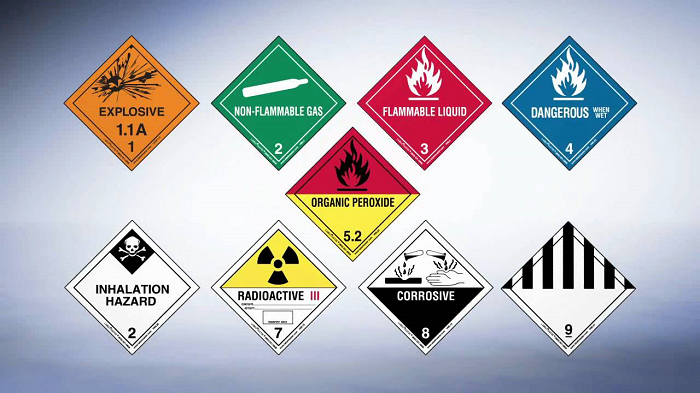
In the intricate web of global commerce and logistics, the transportation of Dangerous Goods (DG) is an essential but high-stakes endeavor. Ensuring the safety of individuals, the environment, and property during the movement of hazardous materials is paramount. This blog embarks on a comprehensive exploration of the indispensable role played by a Dangerous Goods Training Course. We delve into the critical components of such a course, its significance in regulatory compliance, and its pivotal role in safeguarding lives and assets.
Understanding the Gravity of Dangerous Goods:
Dangerous Goods, encompassing substances ranging from flammable liquids to corrosive materials, pose inherent risks during transportation. Recognizing the gravity of these risks, regulatory bodies worldwide mandate strict guidelines to govern the handling, packaging, labeling, and transportation of such materials. A lapse in adherence to these guidelines can have severe consequences, including environmental damage, health hazards, and legal ramifications.
The Comprehensive Nature of Dangerous Goods Training:
Legal Compliance:
A paramount objective of a Dangerous Goods Training Course is to ensure legal compliance. Understanding the intricate web of regulations, such as those outlined by the International Air Transport Association (IATA), the International Maritime Dangerous Goods (IMDG) Code, and national authorities, is crucial. Compliance with these regulations is not merely a suggestion but a legal requirement to guarantee the safety of all stakeholders involved in the transportation process.
Classification of Dangerous Goods:
One of the foundational elements of a Dangerous Goods Training Course is the comprehensive classification of hazardous materials. Professionals must acquire the skills to categorize materials based on their properties, potential risks, and the specific regulations that govern their transportation. This knowledge is pivotal in determining the appropriate packaging, labeling, and documentation requirements.
Packaging and Labeling Protocols:
The correct packaging and labeling of dangerous goods are critical components of safe transportation. A robust training course educates professionals on the diverse packaging materials suitable for different types of hazardous materials, ensuring containment and preventing leaks or spills. Equally crucial is the proper labeling of packages, providing clear identification of the contained dangerous goods.
Documentation Proficiency:
The accurate completion of shipping documentation is a cornerstone of a Dangerous Goods Training Course. Professionals must master the intricacies of completing the Shipper’s Declaration for Dangerous Goods and other relevant paperwork. Thorough documentation not only ensures regulatory compliance but also serves as a vital communication tool between all parties involved in the transportation process.
Emergency Response Protocols:
Preparedness for potential emergencies is a central focus of dangerous goods training. Professionals are trained to respond swiftly and effectively to incidents such as spills, leaks, or accidents during transportation. The course equips individuals with the knowledge and practical skills required to mitigate risks, protect lives, and minimize environmental impact in emergency situations.
The Impact of Dangerous Goods Training:
Enhanced Safety Measures:
The foremost impact of a robust training program is the enhancement of safety measures. Professionals trained in the nuances of dangerous goods transportation become vigilant guardians of safety, implementing preventive measures and responding effectively to potential hazards.
Risk Mitigation:
The identification and mitigation of risks are core objectives of dangerous goods training. Professionals learn to assess the potential risks associated with different materials, transportation methods, and environmental factors. This proactive approach minimizes the likelihood of incidents, protecting both individuals and the broader community.
Operational Efficiency:
A well-trained workforce contributes to operational efficiency in the transportation of dangerous goods. Professionals who understand and adhere to regulatory requirements streamline processes, reducing the likelihood of delays, fines, or legal complications. This efficiency is not only advantageous for the organizations involved but also for the overall reliability of the supply chain.
Legal Conformity:
Compliance with international and national regulations is non-negotiable in the transportation of dangerous goods. A training course ensures that professionals are well-versed in the legal requirements governing their specific industry, reducing the risk of legal consequences and contributing to the integrity of the broader industry.
Global Relevance:
Dangerous goods training is globally relevant, acknowledging the interconnected nature of the modern supply chain. Professionals who undergo standardized training are better equipped to navigate the complexities of international trade and transportation, fostering a global culture of safety and responsibility.
Industry Reputation:
The reputation of industries involved in the transportation of dangerous goods is significantly influenced by their commitment to safety. Organizations that invest in comprehensive training signal a dedication to responsible practices, enhancing their reputation within the industry and among stakeholders.
Environmental Stewardship:
Given the potential environmental impact of mishandling dangerous goods, training programs instill a sense of environmental stewardship. Professionals are educated on the importance of preventing spills, leaks, and contamination to safeguard ecosystems and minimize the ecological footprint of transportation activities.
Explore more about Tallyman Axis and get updated.
The Dynamics of Dangerous Goods Training in Different Industries:
Aviation Industry:
In aviation, the transportation of dangerous goods is subject to stringent regulations outlined by IATA. Dangerous Goods Training for aviation professionals covers the specific requirements for air transportation, including the use of specialized packaging and the adherence to strict documentation protocols.
Maritime Industry:
The maritime sector follows the IMDG Code for the transportation of dangerous goods by sea. Training programs for maritime professionals focus on containerization, stowage, and the specific challenges associated with the marine environment.
Ground Transportation:
Professionals involved in ground transportation, including trucking and rail, undergo training tailored to the unique challenges of overland transportation. This includes considerations for road safety, secure load distribution, and emergency response procedures.
The Evolution of Dangerous Goods Training:
E-Learning and Virtual Training:
The digital era has ushered in new modes of education, and dangerous goods training is no exception. E-learning platforms and virtual training sessions provide flexibility for professionals to undergo training at their own pace. These platforms often include interactive elements, simulations, and assessments to enhance the learning experience.
Continuous Learning:
Dangerous goods training is not a one-time event but an ongoing process. Continuous learning programs ensure that professionals stay abreast of regulatory updates, emerging technologies, and best practices. This commitment to lifelong learning is integral to maintaining the highest standards of safety and compliance.
Global Standardization:
The standardization of dangerous goods training programs on a global scale is increasingly emphasized. International organizations, regulatory bodies, and industry associations collaborate to establish common standards, ensuring consistency in training content and methodologies across borders.
Conclusion:
In the intricate dance of global commerce and logistics, the transportation of dangerous goods demands unwavering attention to safety and compliance. A comprehensive Dangerous Goods Training Course is not merely a regulatory requirement; it is an investment in the safety of individuals, communities, and the environment. As industries evolve, regulations advance, and technology reshapes the landscape, the commitment to training remains a constant. Through these training programs, professionals become the vanguards of safety, navigating the complexities of dangerous goods transportation with competence, responsibility, and an unwavering dedication to the well-being of the global community.



